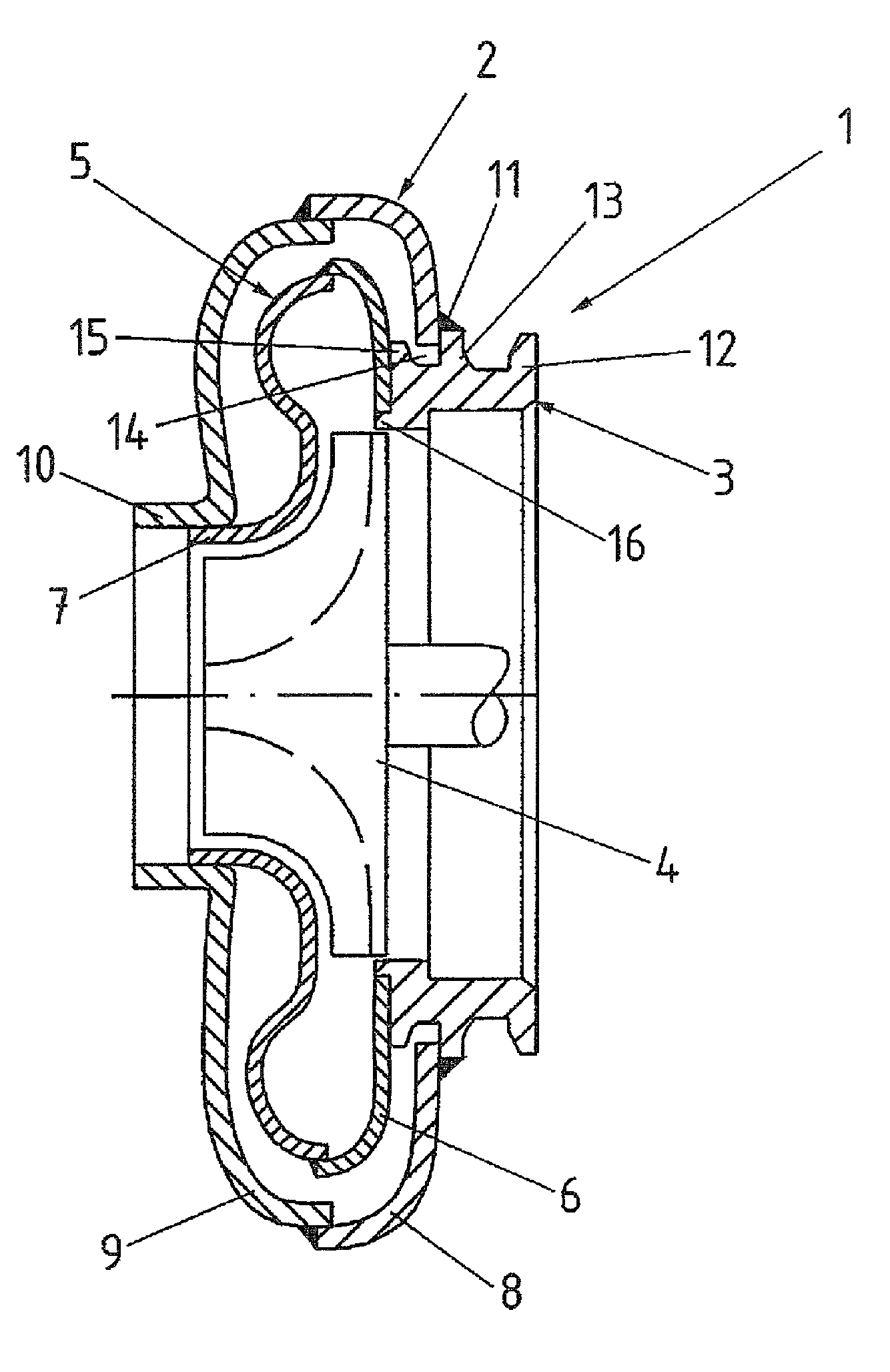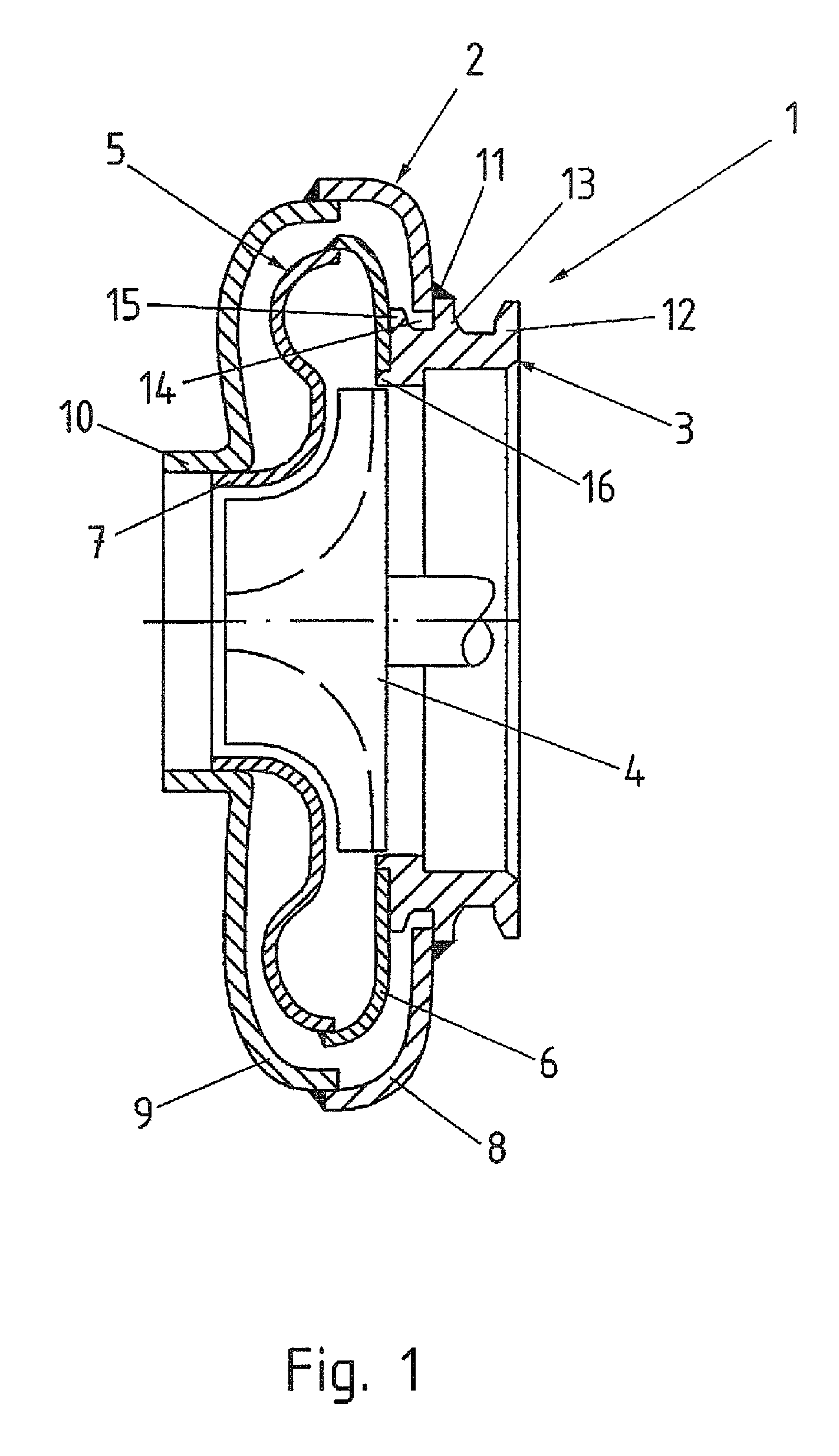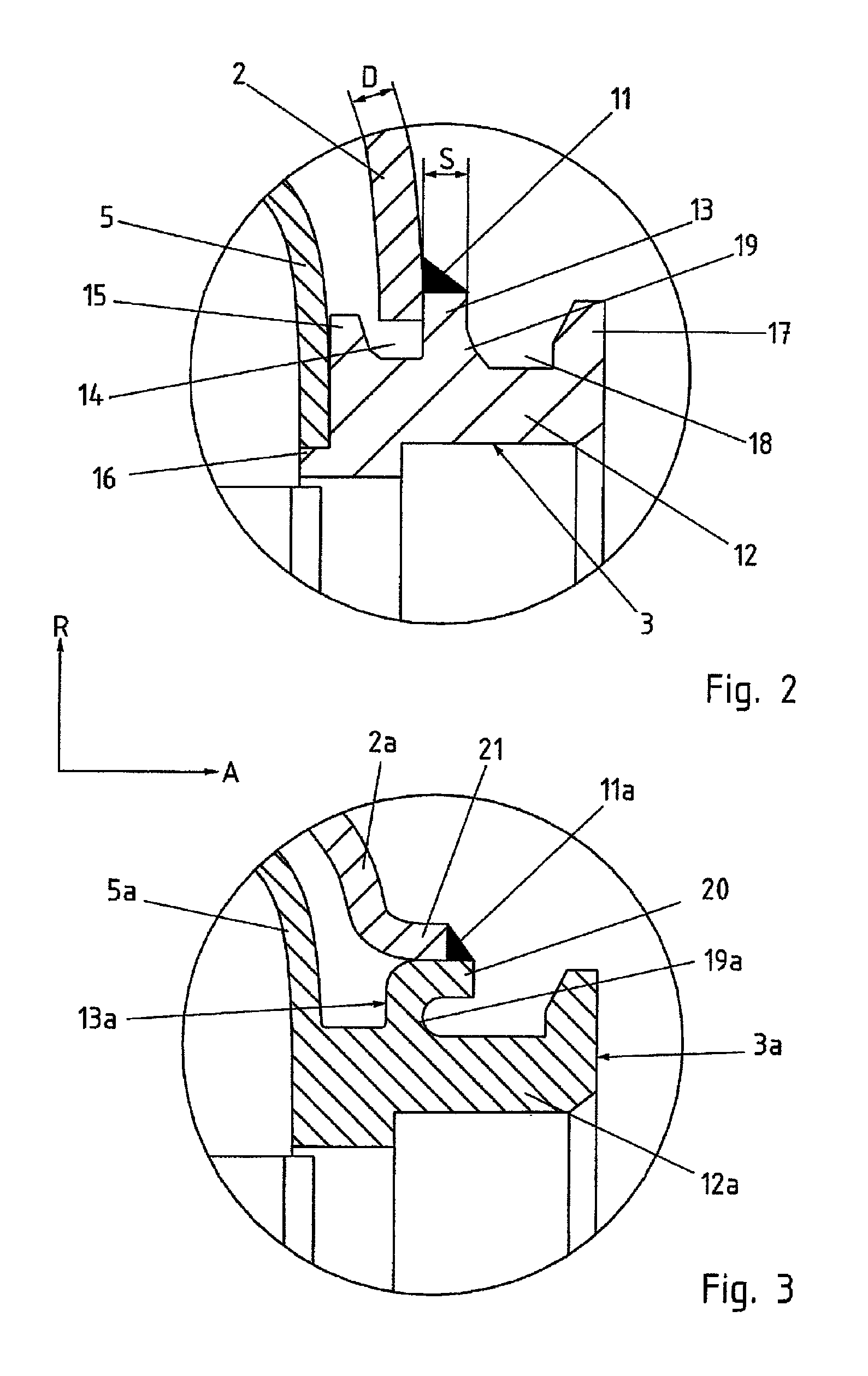Exhaust-gas turbocharger
a turbocharger and exhaust gas technology, applied in the direction of machines/engines, stators, liquid fuel engines, etc., can solve the problems of neither the fin nor the outer housing are excessively melted during fusion, and achieve the effect of reducing stress peaks, compensating manufacturing tolerances, and improving service li
- Summary
- Abstract
- Description
- Claims
- Application Information
AI Technical Summary
Benefits of technology
Problems solved by technology
Method used
Image
Examples
Embodiment Construction
[0023]Throughout all the figures, same or corresponding elements may generally be indicated by same reference numerals. These depicted embodiments are to be understood as illustrative of the invention and not as limiting in any way. It should also be understood that the figures are not necessarily to scale and that the embodiments are sometimes illustrated by graphic symbols, phantom lines, diagrammatic representations and fragmentary views. In certain instances, details which are not necessary for an understanding of the present invention or which render other details difficult to perceive may have been omitted.
[0024]Turning now to the drawing, and in particular to FIG. 1, there is shown a cross section through a turbine housing, generally designated by reference numeral 1, of an exhaust-gas turbocharger in accordance with the present invention. The turbine housing 1 includes an outer housing 2 which is welded with a bearing flange 3. The bearing flange 3 is provided for securement...
PUM
 Login to View More
Login to View More Abstract
Description
Claims
Application Information
 Login to View More
Login to View More - R&D
- Intellectual Property
- Life Sciences
- Materials
- Tech Scout
- Unparalleled Data Quality
- Higher Quality Content
- 60% Fewer Hallucinations
Browse by: Latest US Patents, China's latest patents, Technical Efficacy Thesaurus, Application Domain, Technology Topic, Popular Technical Reports.
© 2025 PatSnap. All rights reserved.Legal|Privacy policy|Modern Slavery Act Transparency Statement|Sitemap|About US| Contact US: help@patsnap.com



